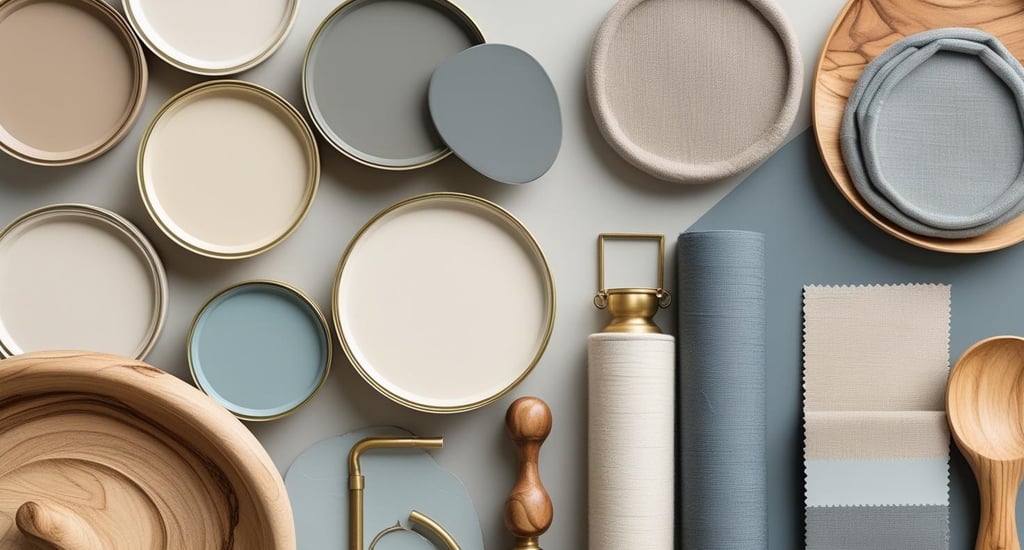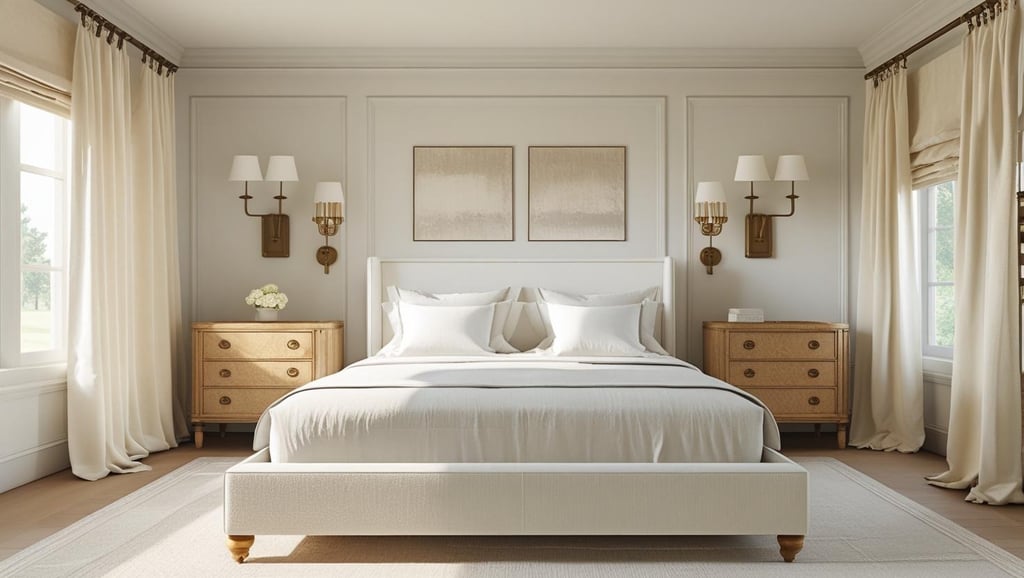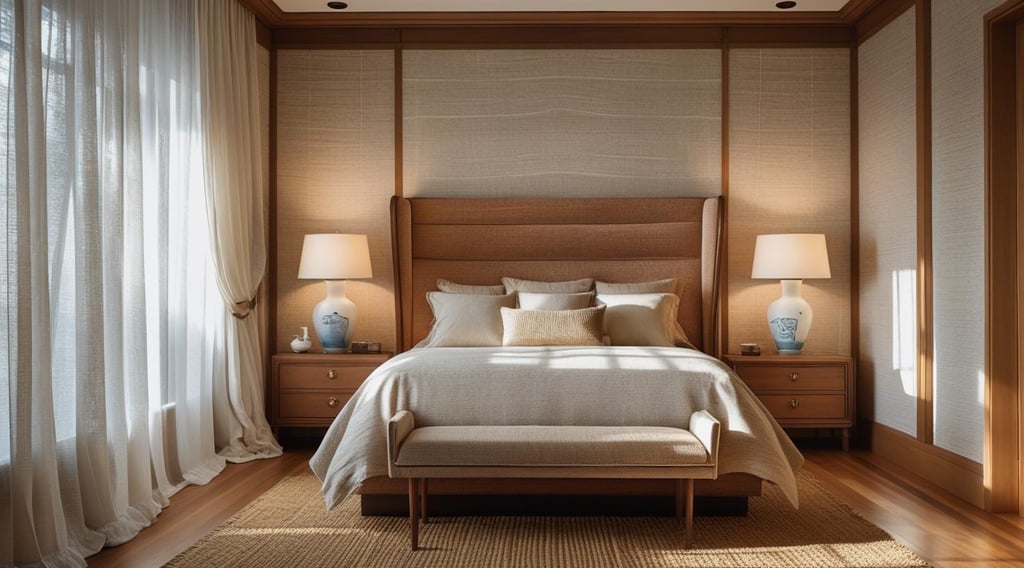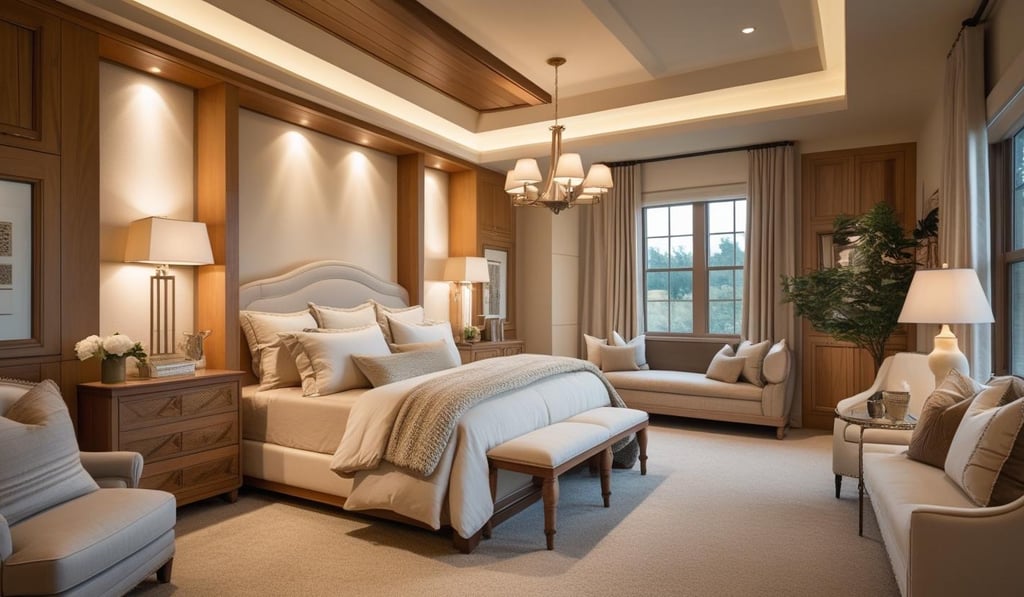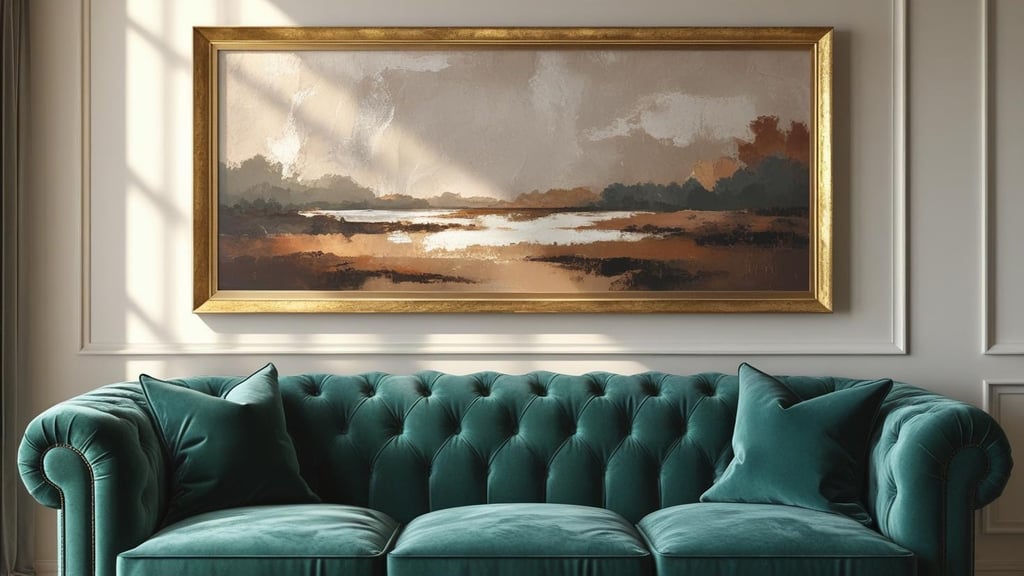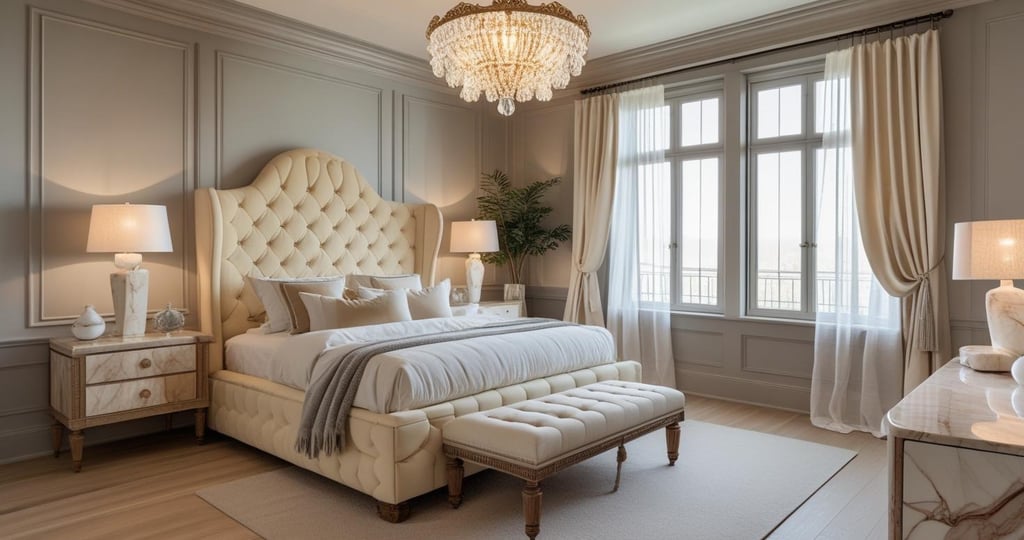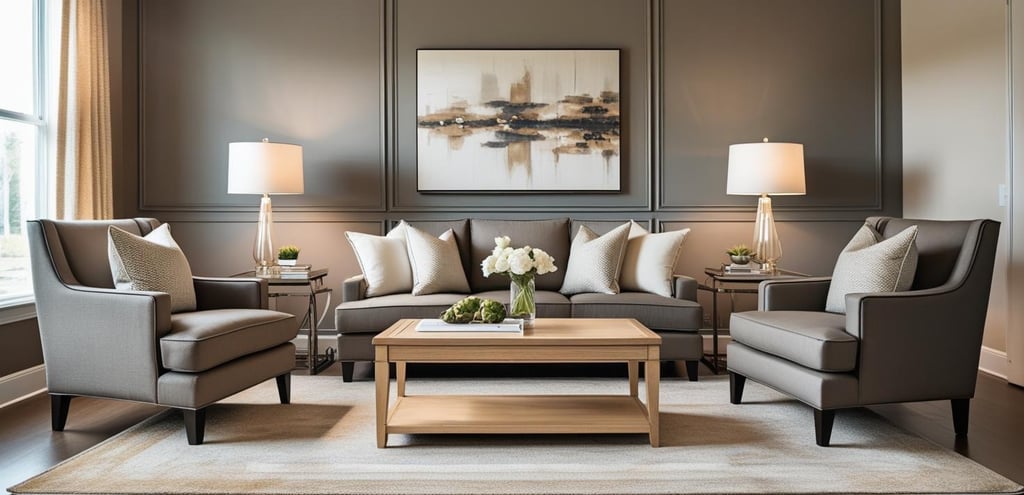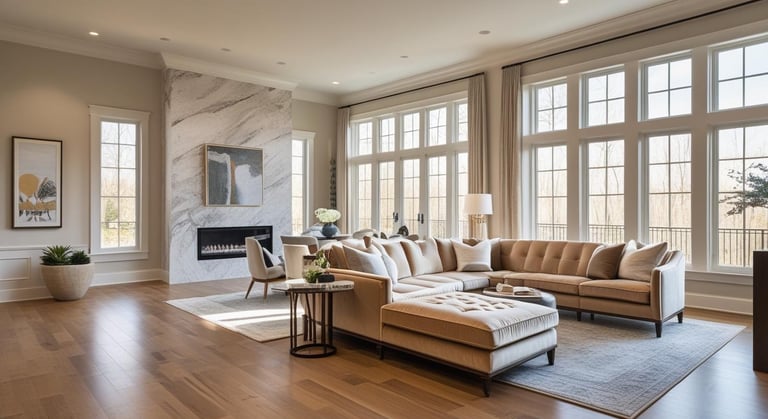modern finds for a cozy home
How to Perfect a Transitional Styled Home
Transitional home styling is all about timeless balance—blending modern minimalism with traditional comfort. Learn how to master this sophisticated, versatile look in your home.
LIVING ROOMENTRYWAYHOME STYLING IDEAS
6/28/20256 min read


What Is Transitional Style in Interior Design?
Transitional style is one of the most popular interior design aesthetics and for good reason. It strikes the perfect balance between old and new, offering the warmth and elegance of traditional design with the clean lines and simplicity of modern elements. If you’ve ever wanted your space to feel polished but still cozy, timeless but not stuffy, transitional style might just be your design sweet spot.
Unlike more defined styles like farmhouse or mid-century modern, transitional interiors are fluid and versatile. They adapt easily to different homes, lifestyles, and personalities—making them perfect for anyone who loves a mix of classic sophistication and current trends.
This post contains affiliate links. As an Amazon Associate, I may earn a small commission from qualifying purchases—at no extra cost to you. I only share products I personally use or truly recommend.
Ready to refresh your home? Let’s dive into effortless styling tips using curated Amazon finds that elevate your transitional space with ease.
Build a Neutral Foundation
Espresso Round End Table | Pedestal Table | Gray Beige Linen Curtains | Beige and Ivory Rug | Geometric Neutral Rug
The first step in creating a transitional space is establishing a neutral, calming color palette. Think warm whites, beiges, soft greys, greiges, and muted earth tones. These soft hues allow textures, shapes, and materials to shine.
Style Tip: Start with paint colors like Benjamin Moore’s Swiss Coffee or Sherwin-Williams’ Agreeable Gray for your walls. Layer in warmth through cream or camel-toned rugs, oatmeal linen drapery, and tan leather or slipcovered upholstery.
Bonus Touch: Add dimension with tonal contrast—like pairing white walls with charcoal or espresso-stained wood furniture for grounding.
Blend Classic and Contemporary Furniture
Tufted Back Leather Couch | Vertical Channel Wingback Tufted Headboard | Whitewash Floral Bedside Table | Spindle Nightstand with 1 Drawer | Swivel Accent Chair with Plump Back Pillow
At the heart of transitional style is the art of mixing: a tufted Chesterfield sofa with clean-lined side tables, or a sleek upholstered bed flanked by vintage nightstands.
The key is to aim for harmony, not contrast. Avoid overly ornate or ultra-minimalist pieces. Instead, look for furniture that feels timeless with subtle details—curved edges, tapered legs, simple nailhead trim, or sleek brass hardware.
Example Pairings:
A skirted accent chair next to a modern glass console
A farmhouse-style wood dining table paired with upholstered Parsons chairs
A contemporary bench at the foot of a traditional panel bed
Prioritize Comfort with Structure
Tufted Wingback Chair | Beige & Ivory Rug | Serene Beige Sofa | Tufted Ottoman Coffee Table | Beige Corduroy Modular Sectional | Cream Modular L-Shaped Couch
Transitional design is approachable but refined. While modern spaces can feel cold and traditional rooms overly decorated, transitional homes are livable. Pieces are chosen for both form and function—plush seating, soft textiles, and cozy layers create a sense of comfort without sacrificing polish.
Furniture Features to Look For:
Cushioned seating with streamlined silhouettes
Minimal ornamentation
Soft fabrics like cotton, linen, or chenille
A balance of straight and curved lines in the same space
Use Texture to Add Warmth
Rattan side table with wicker top | Boucle Throw Pillows | Boucle Storage Bench | Side Table with Marbling Top |
Since transitional interiors lean neutral in color, texture becomes essential in creating depth and interest. Without it, the space can fall flat.
Layer in a variety of materials:
Woven rattan or cane accents
Brushed metals (antique brass, black iron)
Natural wood grains
Cozy textiles (bouclé, chunky knits, velvet, or suede)
Subtle marble or travertine elements
Design Tip: Mix matte, shiny, and tactile surfaces for a sophisticated look. A wood coffee table topped with a glass vase and a soft boucle throw checks every box.
Choose Timeless Lighting with Personality
Black Matte Chandelier with Linen Shades | Brass Gold Pendant Light with Hanging Milk Glass Globe | Alabaster Table Lamp | White Linen Shade with Matte Brass | Gold Candle Chandelier | Brass Wall Sconces | Alabaster Bedside Lamps
Lighting is one of the easiest ways to bridge traditional and modern elements. Transitional lighting should feel elegant but unfussy—nothing too industrial or ultra-minimal.
Top Transitional Lighting Picks:
Chandeliers with traditional curves in matte black or antique brass
Globe pendants in opal glass or linen
Wall sconces with subtle detailing
Linen or silk lampshades in classic shapes
Visual Trick: Add oversized lighting to elevate the scale of the room, especially in dining areas or entryways.
Select Art That Balances Style
Gold Abstract Minimalist Wall Art | Landscape in Gold Frame | Duotone Gray and Tan Abstract Set of 3 | Mountain Lake Painting |
Artwork is where your personality really shines. Transitional interiors allow for a mix of abstract, landscape, and classic figurative art—as long as it’s curated in a balanced, thoughtful way.
Art Styling Ideas:
Oversized abstract print above a traditional fireplace
Vintage-inspired landscapes flanking a modern mirror
Layered art in neutral frames for a gallery wall that feels elevated, not cluttered
Color Palette Tip: Stick to earthy tones, black and white, or sepia to keep the look cohesive with the overall space.
Don’t Skip Natural Elements
Silk Olive Tree | Flat Leave Jute Rug | Beige Braided Rug | Modern Walnut Dinner Table | Travertine Stone Serving Tray | Alabaster Tissue Box
Nature-inspired textures and materials bring life to transitional spaces. Wood, stone, leather, and greenery help the room feel warm and organic, softening any hard edges or clean lines.
Easy Ways to Bring Nature In:
Add a faux or real olive tree in a stone planter
Use a jute or sisal rug to ground the space
Choose a wood dining table with visible grain
Decorate with travertine or alabaster accessories
Keep Patterns Simple and Refined
Off White Vintage Braided Rug | Blue and Ivory Vintage Rug | Linen Check Pillows | Chenille Throw Pillow Cases | Medallion Quilt Bedding Set
In transitional design, pattern is used sparingly and purposefully. You'll often see tone-on-tone patterns, subtle stripes, or timeless motifs like herringbone and pinstripe. These add detail without overwhelming the space.
Textiles to Try:
Neutral striped throw pillows
A subtle floral print on drapery or bedding
Herringbone patterned rugs in ivory and gray
Mixing too many bold prints can clash with the clean simplicity of transitional design. Aim for pattern with polish.
Create Symmetry and Flow
Transitional homes often feature symmetrical arrangements to enhance calm and order. Matching lamps, mirrored nightstands, or flanking armchairs can all bring a sense of balance.
Space Planning Tip: Leave “breathing room” between furniture and avoid over-accessorizing. Transitional rooms feel spacious, open, and serene.
Layout Example: In a living room, place a sofa facing two armchairs, with a central coffee table and matching side tables on either end.
Final Thoughts: Invest in Quality, Not Quantity
Transitional design isn’t about following every trend. It’s about choosing pieces that feel classic, tailored, and built to last. Focus your budget on a few high-impact items: a sofa, dining table, or lighting fixture. Then, update seasonally with fresh accents.
Smart Investment Pieces:
A well-constructed neutral sectional
Solid wood dining table
Upholstered bed with a tall headboard
Brass floor lamp or chandelier
Transitional design is effortlessly timeless. It allows your home to feel fresh yet familiar, stylish yet inviting. Whether you're decorating a new space or updating a few pieces, transitional style gives you room to play without ever feeling dated.
It’s the kind of style that grows with you—beautifully.
Love the timeless, balanced feel of transitional style?
Shop my curated Amazon favorites here — from cozy neutrals to elegant lighting, I’ve handpicked pieces that bring this look to life.
Want even more inspiration?
Follow me on Pinterest for daily pins, mood boards, and styling ideas to help you design a home that feels both classic and current.
Let’s style a space you love — effortlessly.
